Espresso is an art form, a delicate dance between water and finely ground coffee. But nothing ruins that dance faster than channeling. Channeling happens when water finds the path of least resistance through the coffee puck, leading to uneven extraction and a disappointing shot of espresso.
If you’re tired of bitter or sour espresso and want to master the perfect pull, you’re in the right place. In this guide, we’ll explore what channeling is, why it happens, and most importantly, how to avoid channeling espresso.
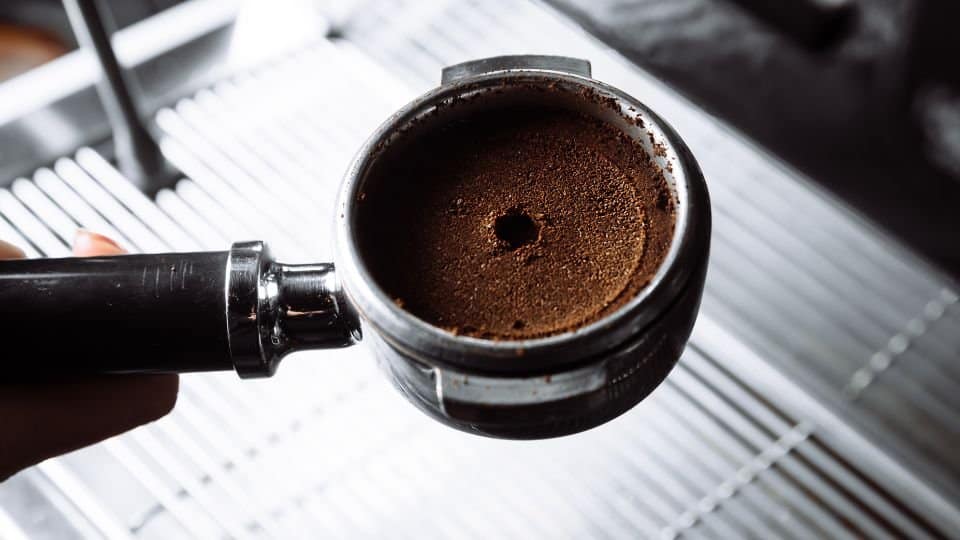
What is Espresso Channeling?
Channeling occurs when water bypasses certain areas of the coffee puck, creating channels that result in uneven extraction.
This means some parts of your coffee will be over-extracted (bitter) while others are under-extracted (sour). Understanding the cause of channeling is the first step towards preventing it.
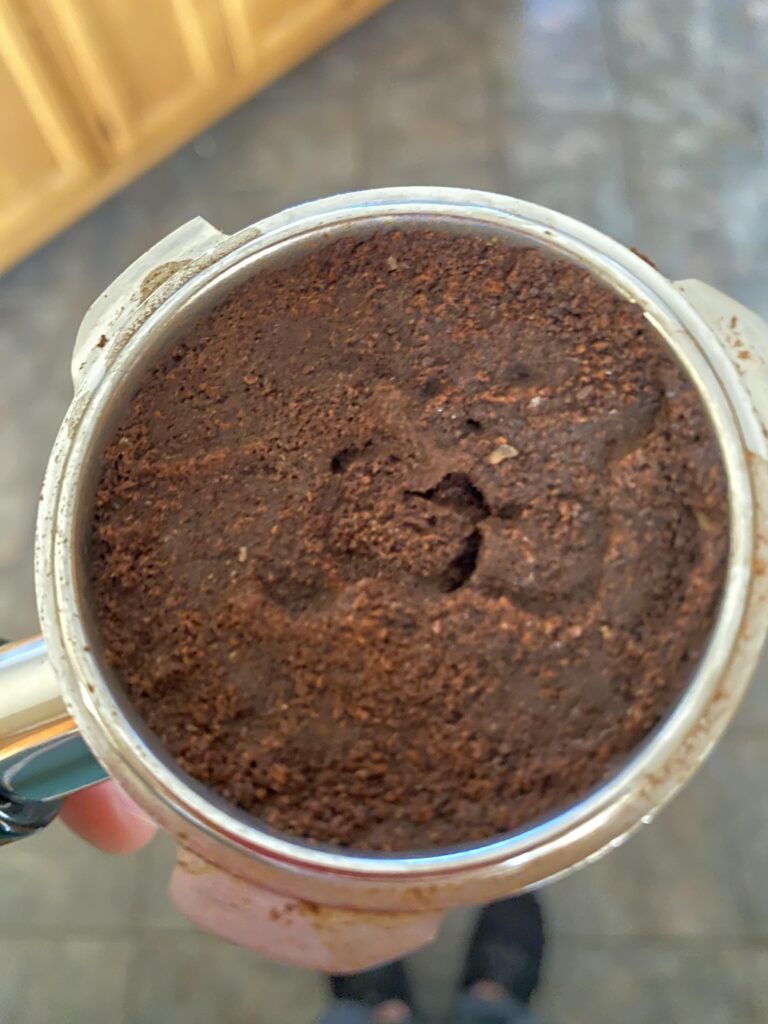
How to Avoid Espresso Channeling: A Comprehensive Understanding
Coffee channeling in espresso making refers to the uneven flow of water through the coffee puck, which occurs when the water finds paths of least resistance. These paths, or channels, allow water to bypass densely packed coffee grounds, leading to uneven extraction.
The result? A shot of espresso that’s a mix of over-extracted bitterness and under-extracted sourness. Channeling not only affects the flavor and aroma of your espresso but also its consistency, making it a barista’s nemesis.
Signs of Channeling
Identifying channeling can be done through both visual cues and taste discrepancies. Here’s what to look for:
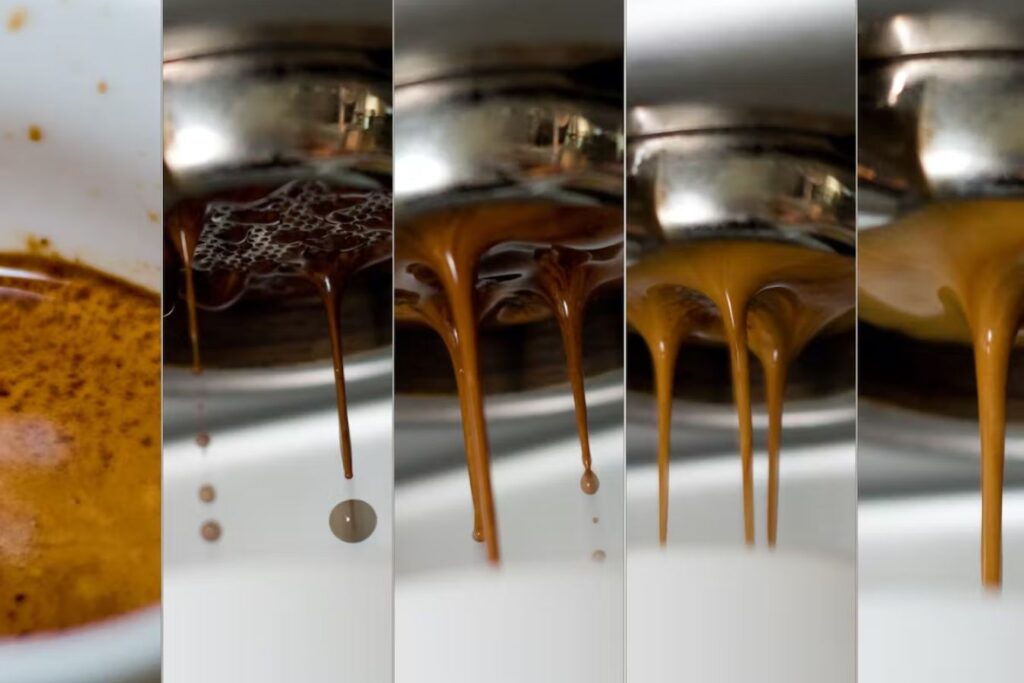
Visual Cues:
Uneven Extraction: Look for inconsistent flow during the extraction process. If the espresso flows faster from one side or appears to have multiple streams, channeling might be the culprit.
Wet Spots on the Puck: After extraction, check the coffee puck. Uneven wet spots or holes indicate that water didn’t flow evenly through the coffee.
Spent Coffee Grounds: Examine the spent coffee grounds after brewing. Visible holes or cracks in the grounds can indicate channeling, highlighting the importance of even extraction.
Taste Discrepancies:
Bitter or Sour Taste: An espresso that tastes overly bitter or sour, despite using the correct grind size and extraction time, is a clear indicator of channeling.
Weak or Watery Espresso: If your shot lacks the rich, full-bodied flavor typical of a well-pulled espresso, it might be due to uneven extraction caused by channeling.
Causes of Channeling
Channeling during espresso extraction can be attributed to several factors, each playing a critical role in the overall process. In the espresso brewing process, channeling occurs when water flows unevenly through the coffee puck due to factors like uneven tamping or grind size.
High pressure in espresso brewing can exacerbate this issue, leading to undesirable flavors in the final shot. Understanding these factors helps in taking the right steps to prevent channeling and achieve a perfect shot of espresso. Here’s a detailed look at the main causes:
Inconsistent Grind Size: A mix of fine and coarse particles leads to uneven water flow.
Uneven Distribution: Poorly distributed coffee grounds in the portafilter create weak spots.
Improper Tamping: Uneven tamping pressure results in an uneven coffee bed.
Channeling in the Machine: Issues like worn-out group head gaskets or uneven water dispersion can contribute to channeling.
Grinder and Grind Size Consistency
The quality of your grinder and the consistency of your grind size are fundamental to preventing channeling. Here’s how they affect the espresso extraction process:
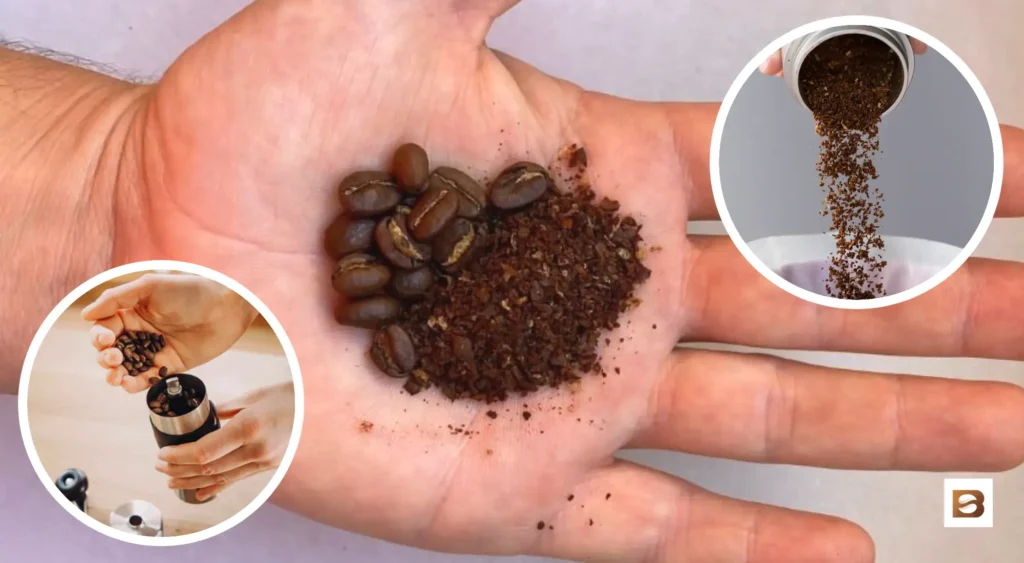
Grinder Quality:
Burr Grinders vs. Blade Grinders: Burr grinders offer a consistent grind size, whereas blade grinders can produce uneven particles, increasing the risk of channeling.
Grind Uniformity: A high-quality burr grinder ensures that all coffee particles are of similar size, promoting even extraction.
Grind Size:
Fine-Tuning: The grind size should be fine enough to create resistance but not so fine that it clogs the portafilter. Regular adjustments are necessary to match the coffee beans and the espresso machine.
Avoiding Bimodal Grind: Ensure your grinder does not produce a mix of fine and coarse particles. This bimodal distribution leads to uneven water flow and channeling.
Dosing Too Much Coffee: Using too much coffee can create excessive pressure or restrict the expansion of the coffee puck, leading to channeling. Proper dosing techniques are essential to avoid this issue.
Tamping Technique
Proper tamping is crucial to creating a uniform coffee puck that resists channeling. Here’s what you need to know about tamping:
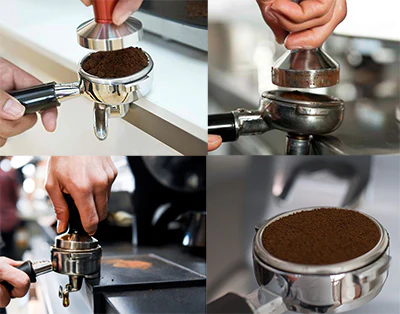
Even Pressure:
Consistent Pressure: Apply even pressure across the entire coffee bed. Inconsistent tamping pressure creates weak spots where water can channel through more easily, following the path of least resistance. This can lead to over-extraction or under-extraction of coffee flavors.
Firm but Not Overly Forceful: Aim for a firm tamp, about 30 pounds of pressure, to compress the coffee evenly without making it too dense.
Level Tamp:
Flat Surface: Ensure the tamp is level. A tilted tamp results in uneven density across the puck, increasing the likelihood of channeling.
Tools: Using a calibrated tamper or a distribution tool can help achieve a more even tamp, minimizing the risk of channeling.
Practical Solutions to Prevent Channeling
Preventing channeling requires a combination of proper technique, equipment adjustments, and a keen eye for detail. Here are actionable steps and solutions to help you minimize or prevent channeling and achieve a consistently excellent espresso shot:
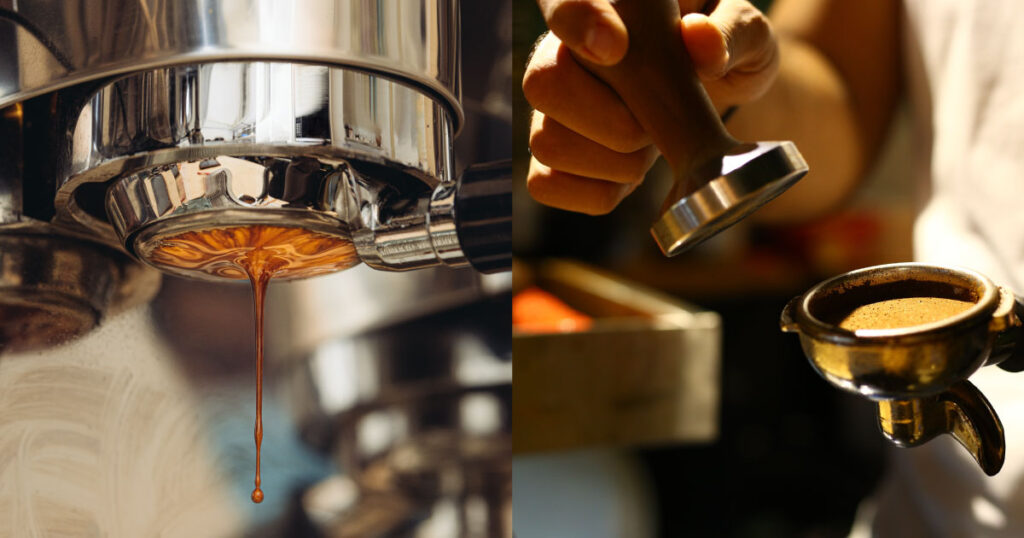
Consistent Grind Size: Invest in a high-quality burr grinder to ensure uniform particle size.
Proper Distribution: Use a distribution tool to evenly spread coffee grounds in the portafilter before tamping.
Over Extracted Coffee: Proper distribution helps prevent over extracted coffee, which occurs when water flows through certain areas of the coffee puck more easily. This leads to a bitter taste in the espresso and under extracted areas that contribute sour notes. Addressing channelling is essential to achieve a balanced brew.
Correct Tamping: Apply consistent, level pressure when tamping to create an even coffee puck.
Machine Maintenance: Regularly clean and maintain your espresso machine to ensure even water dispersion.
Adjusting the Grinder Settings
Finding the right grind setting for your espresso machine is crucial in reducing the risk of channeling. Here’s a step-by-step guide to help you adjust your grinder settings effectively:
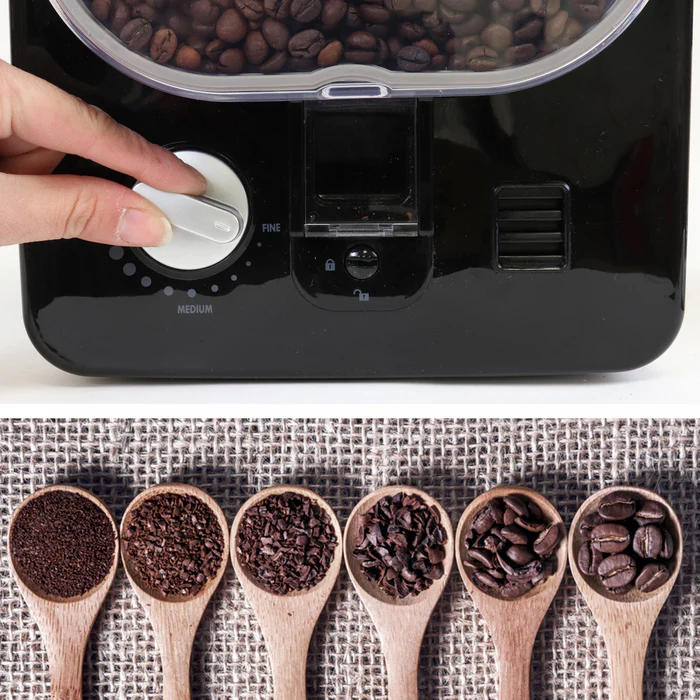
Start with the Manufacturer’s Recommendation:
Use the grind setting suggested by your grinder’s manufacturer as a starting point.
Test and Adjust:
Pull a test shot and observe the extraction. If the espresso flows too quickly or slowly, adjust the grind size accordingly.
Finer Grind: If the espresso flows too quickly, adjust to a finer grind. This increases resistance and slows down the water flow.
Coarser Grind: If the espresso flows too slowly or clogs, adjust to a coarser grind to allow better water flow.
Consistency is Key:
Make small adjustments and pull multiple test shots to find the optimal grind size. Consistent grind adjustments ensure that you find the sweet spot for your espresso machine and beans.
Advanced Tamping Techniques
Mastering advanced tamping methods can significantly enhance the even distribution and density of coffee grounds, reducing the risk of channeling. Here are some advanced tamping techniques to consider:
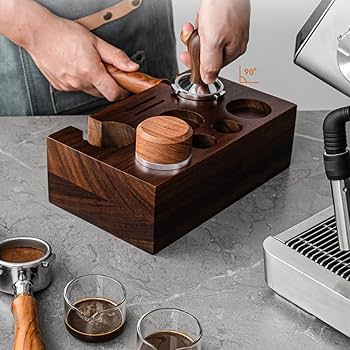
The Stockfleth Technique:
Named after a famous Norwegian barista, this technique involves twisting the wrist while leveling the grounds with the tamper. It helps achieve an even distribution before applying pressure.
Using a Distribution Tool:
Before tamping, use a distribution tool to spread the coffee grounds evenly in the portafilter. This tool helps to eliminate air pockets and create a uniform surface for tamping.
Calibrated Tampers:
Invest in a calibrated tamper that clicks at a specific pressure (usually around 30 pounds). This ensures that you apply consistent pressure every time, promoting an even coffee bed.
Double Tamp:
Some baristas prefer a double tamp method. First, apply light pressure to level the grounds, then tap the portafilter to settle the coffee and apply the final tamp with firm, even pressure.
Tools and Accessories
Achieving a more consistent espresso extraction and reducing channeling often involves using the right tools and accessories. Here are some essential items that can help improve your espresso-making process:
Burr Grinder: Ensures a consistent grind size, which is crucial for even extraction.
Tamper: A good quality tamper helps apply even pressure to the coffee puck.
Distribution Tool: Helps in evenly spreading coffee grounds before tamping.
Calibrated Tamper: Ensures consistent tamping pressure.
Precision Scales: For measuring coffee grounds accurately to maintain consistency.
Puck Screen: Helps to evenly distribute water flow over the coffee puck, minimizing channeling.
Using a Coffee Distributor
A coffee distributor, also known as a distribution tool, plays a significant role in achieving an even coffee bed and reducing the risk of channeling. Here’s how it works and its impact on channeling:
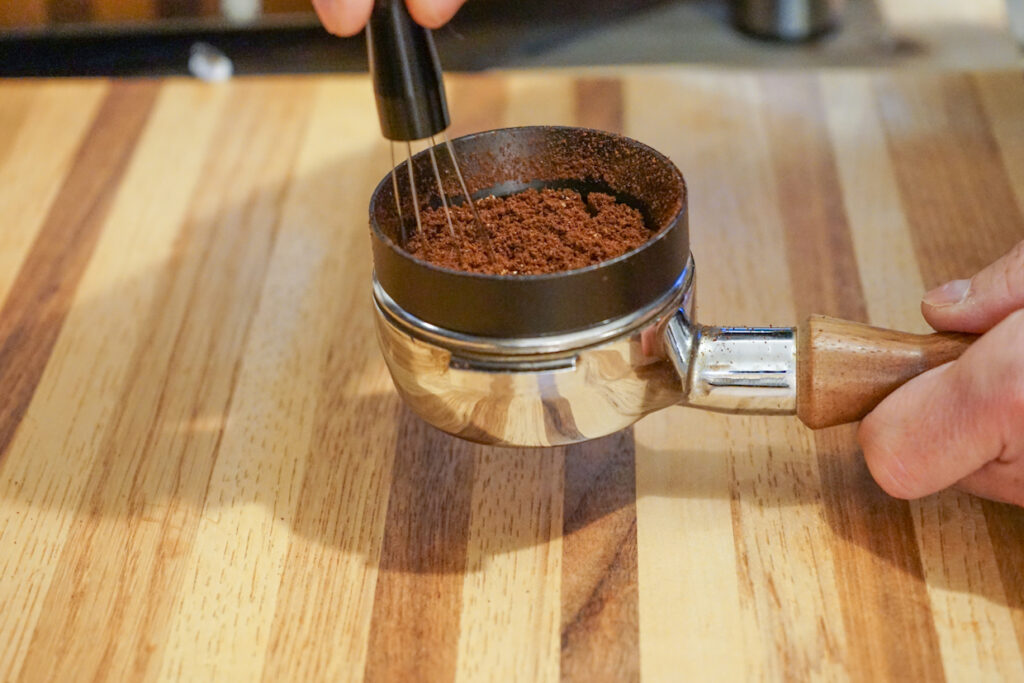
Even Distribution:
The primary function of a coffee distributor is to spread the coffee grounds evenly in the portafilter. This eliminates uneven spots and air pockets that can lead to channeling.
Adjustable Depth:
Many coffee distributors come with adjustable depth settings, allowing you to set the tool to the exact height of your coffee bed. This ensures uniform distribution across different doses.
Enhanced Consistency:
Using a coffee distributor ensures that each puck has a uniform density, promoting even water flow during extraction. This consistency helps in reducing the chances of channeling.
Simple to Use:
Place the distributor on top of the coffee bed and rotate it. The tool’s design spreads the coffee grounds evenly without much effort, making it an essential accessory for both novice and experienced baristas.
Impact on Channeling:
By creating a level and uniform coffee bed, a coffee distributor minimizes the weak spots where water might channel through. This leads to a more balanced extraction, enhancing the flavor and quality of your espresso.
Long-Term Strategies for Channeling Reduction
Achieving consistent espresso coffee extraction and preventing channeling isn’t just about quick fixes; it requires long-term strategies to refine your technique and equipment. Proper techniques, such as grinding, tamping, and machine settings, are crucial for improving the consistency and taste of espresso coffee. Here are some approaches to consider for a more sustainable improvement in your espresso-making process:
Invest in High-Quality Equipment:
Espresso Machine: A reliable, well-maintained espresso machine with even water distribution is crucial. Look for machines with advanced features like pre-infusion and PID controllers.
Grinder: A top-tier burr grinder that offers precise and consistent grind sizes is a worthy investment. Regular maintenance and calibration of your grinder ensure it performs optimally over time.
Regular Maintenance:
Cleaning: Regularly clean your espresso machine and grinder to prevent build-up of coffee oils and residues that can affect performance.
Inspection: Periodically inspect and replace parts like gaskets, screens, and burrs to maintain the efficiency of your equipment.
Consistent Techniques:
Training and Practice: Continuously refine your barista skills through training and practice. Attend workshops, watch tutorials, and practice consistently to improve your tamping and distribution techniques.
Routine Calibration: Regularly calibrate your grinder and espresso machine settings based on the type of coffee beans and desired shot characteristics.
Quality Beans:
Freshness: Use freshly roasted beans and grind them just before brewing. Fresh beans enhance the quality of extraction and reduce the risk of channeling.
Consistency: Stick to a reliable source of coffee beans to maintain consistency in your espresso shots.
Feedback and Adjustment:
Taste Testing: Regularly taste and evaluate your espresso shots. Note any variations in flavor and adjust your technique or equipment settings accordingly.
Data Logging: Keep a log of your espresso parameters (grind size, dose, extraction time) and outcomes. This data helps in identifying patterns and making informed adjustments.
Community and Resources:
Engage with the Barista Community: Join forums, attend barista meet-ups, and engage with other coffee enthusiasts. Sharing experiences and tips can provide valuable insights.
Stay Updated: Keep up with the latest trends, techniques, and technologies in the espresso world. Subscribing to coffee magazines, blogs, and attending industry events can keep you informed.
Disclosure: Our blog contains affiliate links to products. We may receive a commission for purchases made through these links. However, this does not impact our reviews and comparisons. We try our best to keep things fair and balanced, in order to help you make the best choice for you.
Tips for Perfect Shots Every Time
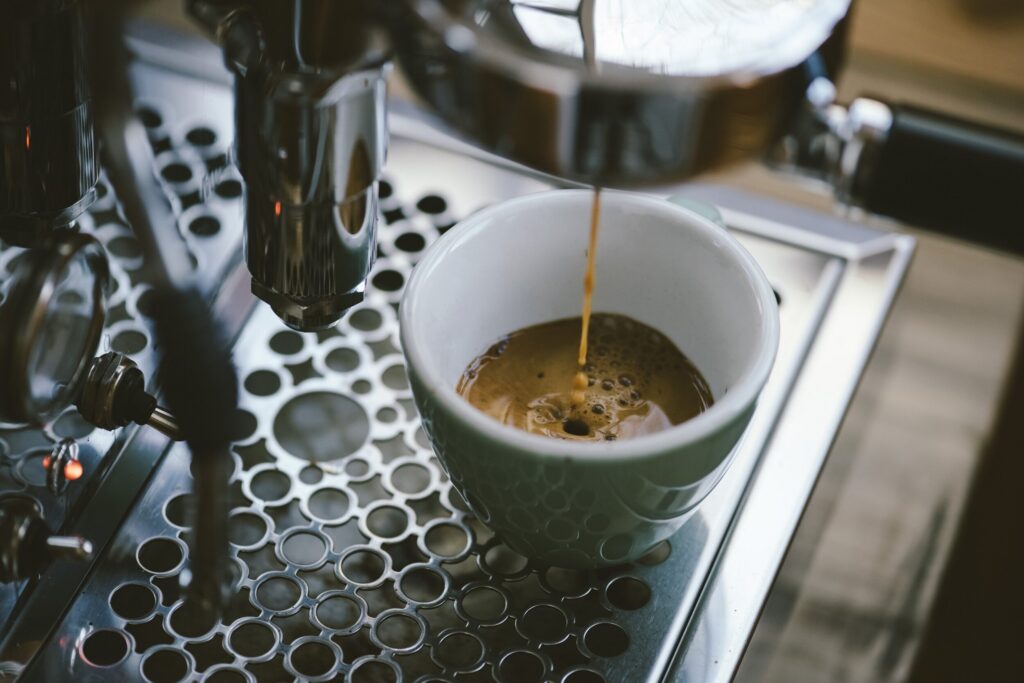
Understanding Channeling
Channeling occurs when water flows unevenly through the coffee puck, causing over-extracted and under-extracted areas.
This leads to a combination of sour and bitter notes in the espresso shot.
Channeling is a sign of uneven extraction and can be caused by inconsistencies in coffee grounds, tamping, or grind size.
Coffee Preparation
Grinding and Dosing
Use a high-quality grinder to achieve a consistent grind size.
Adjust grind size to avoid grinding too finely, which can cause channeling.
Use a dosing cup to measure and weigh the coffee dose for consistency.
De-clump the coffee grounds using a dosing cup or WDT tool to prevent inconsistencies in the coffee puck.
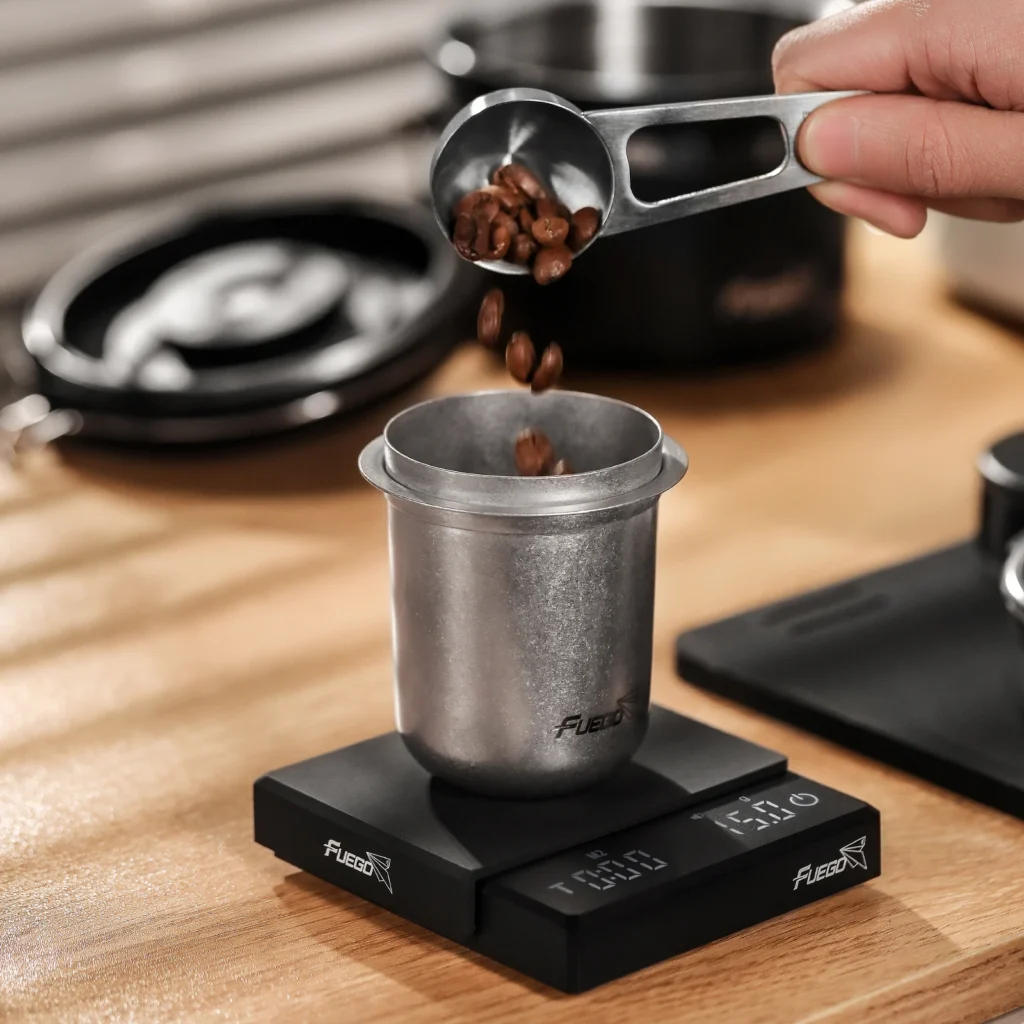
Tamping and Coffee Bed
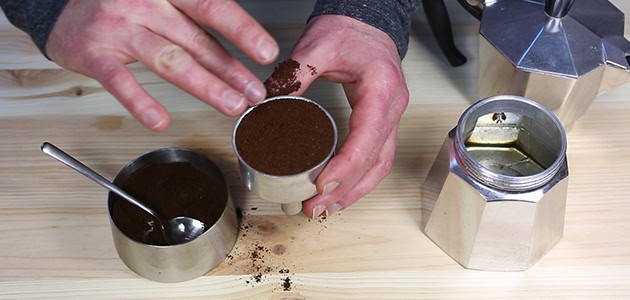
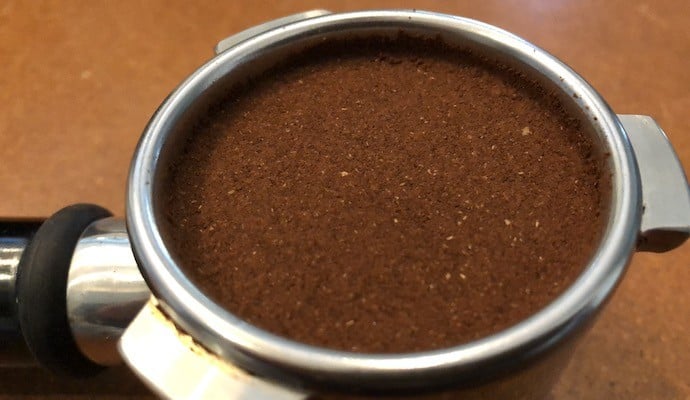
Use a distribution tool to level out the grounds and prepare them for tamping.
Apply firm, even pressure to create a level surface and prevent channeling.
Ensure the coffee bed is evenly saturated and free of channels.
Espresso Machine and Portafilter
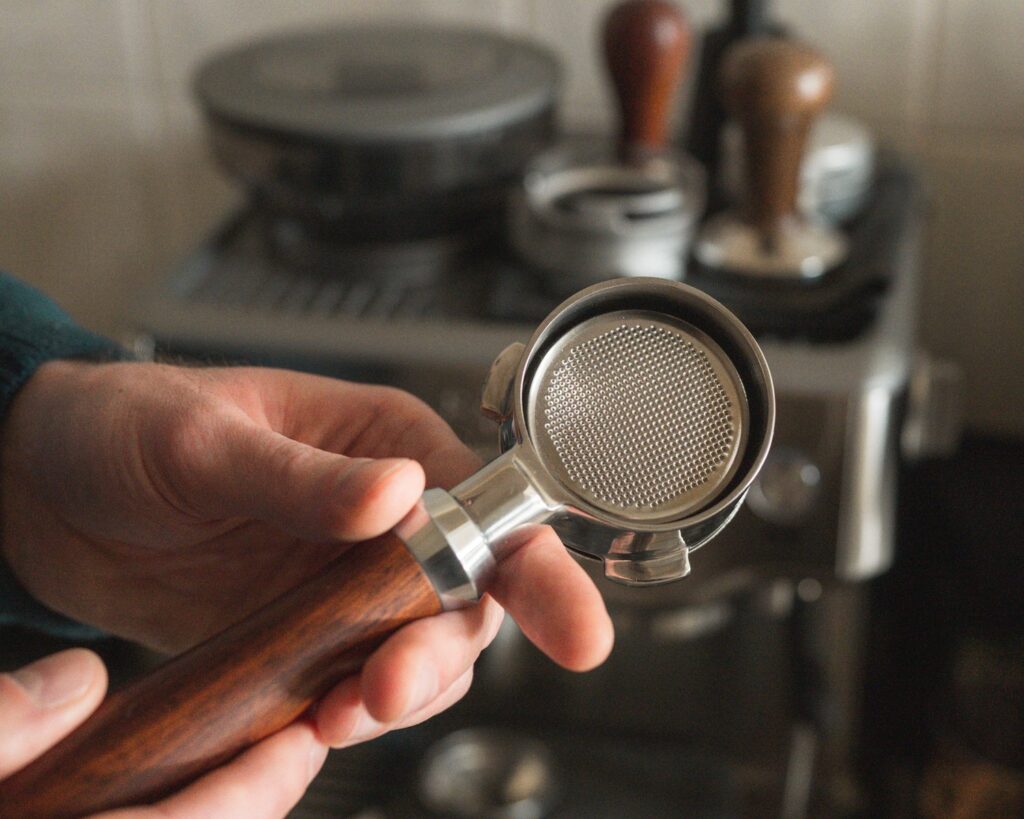
Use a bottomless portafilter to diagnose and troubleshoot channeling issues.
Adjust the espresso machine’s settings to brew at a lower pressure if necessary.
Clean the filter basket and group head regularly to prevent clogs and ensure smooth water flow.
Distribution Techniques
Use the Weiss Distribution Technique (WDT) to break up clumps and ensure even distribution throughout the basket.
Experiment with different distribution tools, such as the wedge distribution tool, to improve distribution.
Use a shower screen to control the flow of water and prevent uneven extraction.

Coffee Puck and Extraction

Inspect the used coffee puck for signs of channeling, such as pin holes or uneven extraction.
Analyze the espresso shot flow and time to identify channeling issues.
Measure and weigh input and output coffee volumes to ensure consistency.
Troubleshooting
Check for uneven tamping and use a distribution tool to break up clumps in the ground coffee bed.
Adjust grind size to avoid grinding too finely, which can cause channeling.
Ensure consistent grind size by purging an espresso worth of coffee through the grinder before grinding the next dose.
Leave enough headroom in the portafilter basket to avoid mashing ground coffee into the brew head.
Conclusion
Perfecting espresso extraction requires patience and practice.
Experiment with different techniques and variables to find what works best for you.
Don’t change too many variables at once, and take your time to fine-tune your technique.
Enjoy the process and the journey of honing your craft, and remember that what matters most is the quality of your espresso.

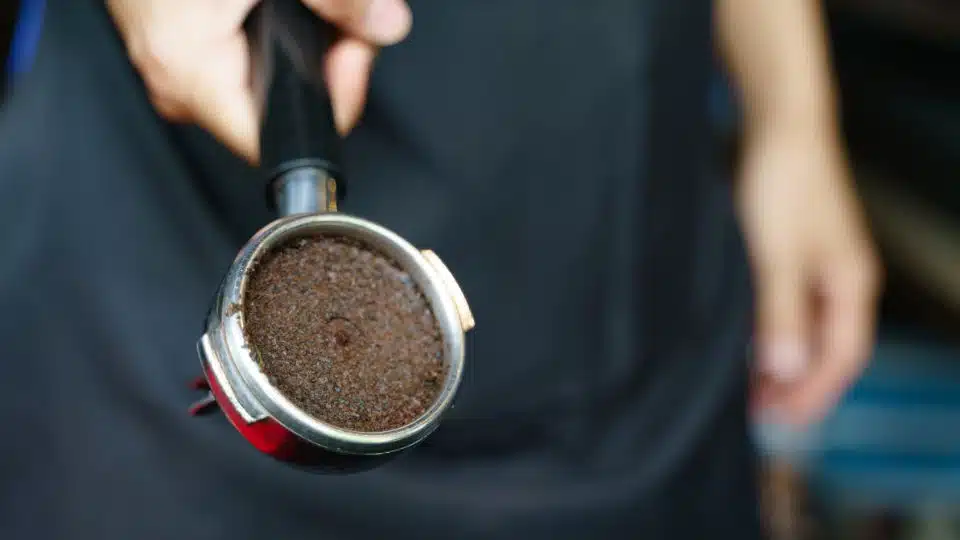


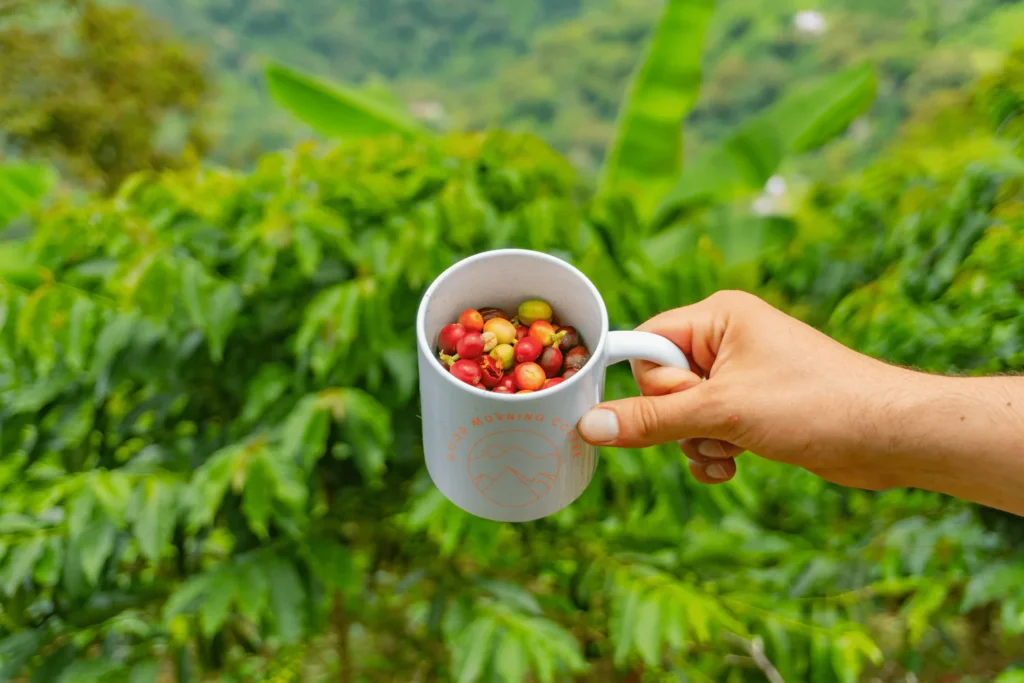

One Response